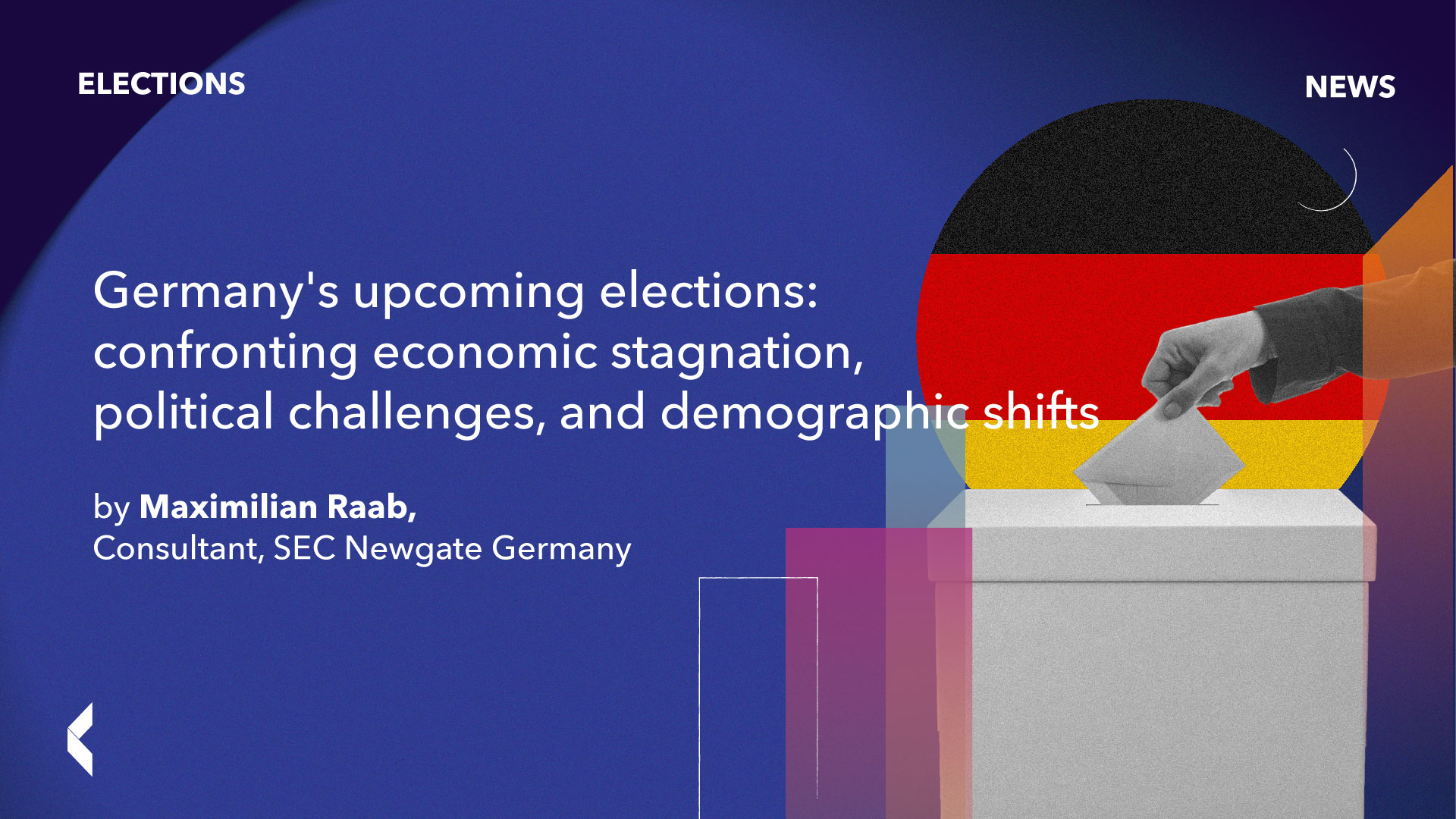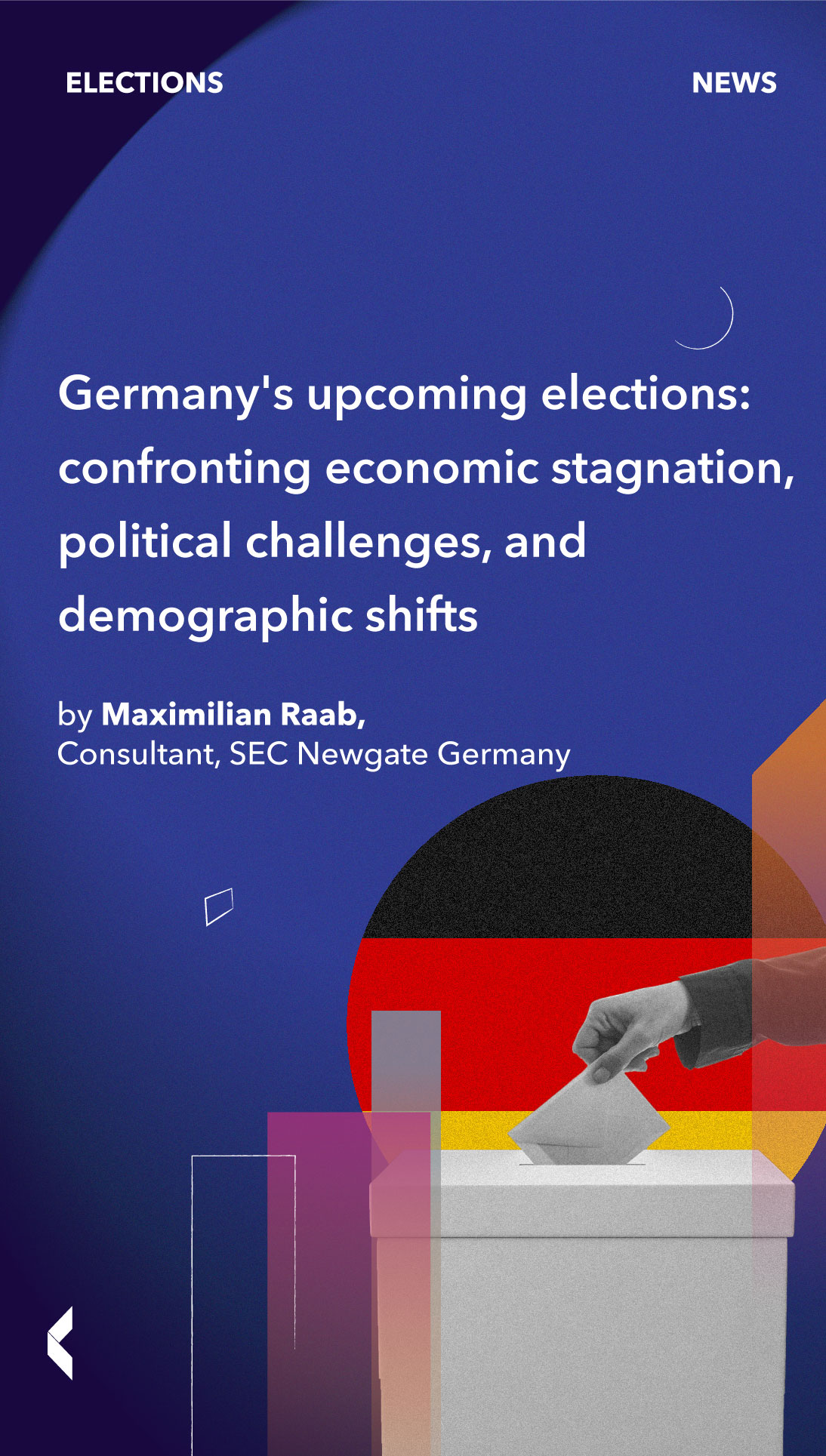About the Author
Germany, Europe’s largest economy and most populous country, is heading to early elections on February 23. These federal elections come at a particularly challenging time for the nation, as it experiences economic stagnation and political challenges.
For the second consecutive year, Germany’s economy contracted in 2024, making it the weakest performer among the G7 nations. In comparison to 2019, Germany’s economic recovery lags behind its peers, and the outlook for the coming years remains precarious.
Experts cite several factors behind the economic downturn, with a few key issues standing out.
First, Germany’s once-successful economic model is beginning to crumble. The country’s reliance on cheap Russian energy has been replaced by more expensive imports from Norway and the U.S., among others, while demand for German exports, particularly from China, has slowed. This slowdown is further exacerbated by increased protectionism in many parts of the world and diminishing competitiveness in Germany’s key manufacturing sectors, such as the automotive industry.
Meanwhile, German companies face pressure from the European Green Deal and even more ambitious national climate goals, placing an additional strain on their operations.
One might argue that Germany, as one of Europe’s wealthiest nations, has the financial resources to stimulate economic growth and fund necessary transitions. While there is some truth to this, it is crucial to consider the broader political context at this point.
Various policy areas now require significant investments. During Chancellor Merkel’s tenure, long-term infrastructure investments were neglected, and Germany’s infrastructure – including railways, roads, digital systems, and military readiness – has fallen into disrepair. A broad coalition of economists estimates that Germany will need to invest an additional €60 billion annually in infrastructure until 2035.
Turning to the Bundeswehr, Germany’s military budget is currently set at approximately €53 billion. With the growing threat from Russia to the European security architecture and a declining willingness by the US government to pay for Europe’s security, the consensus is shifting toward spending 2-3.5% or even 5% of GDP on defence. For Germany, this means a potential increase in military spending to anywhere from €86 billion (2%) to €150 billion (3.5%). Given President Trump’s continued questioning of the US’ commitment to NATO, the upper end of the estimate (or even more) seems increasingly realistic. In total, addressing both defence and infrastructure will require at least an additional €100 billion to €160 billion per year, or 20-30% of Germany’s 2024 federal budget.
The final, and for many the most pressing, issue is Germany’s demographic shift and its implications for the welfare state. Even compared to other industrialized Western nations, Germany faces a severe imbalance between the retiring population and those of working age. As the tax burden for the young generation increases to sustain public health, pension, and care systems, nonetheless, there is growing concern that the elderly will face a decline in their living standards, nonetheless. Meanwhile, the shrinking workforce will limit companies’ economic potential.
Current election polls suggest that Germans are likely to elect the conservative CDU/CSU, headed by Friedrich Merz, on February 23. His government will mostly likely need to rely on a left-wing junior coalition partner and will face the delicate task of restarting the economy while mobilizing the necessary public funds for infrastructure investments. At the same time, Merz will need to manage rising welfare system costs without stifling the working-age population, which is critical for the country’s economic recovery.
To address the challenges of migration, the economy, and security, Merz must also work to revitalize the European Union and (re-)build stronger relationships with key neighbours such as Poland and France, among others.
Despite these challenges, there are at least two reasons for cautious optimism. First, Germany’s relatively low debt ratio compared to many other G7 countries provides it with some fiscal flexibility to invest in critical sectors. Second, the rise of artificial intelligence has the potential to offset the impact of a shrinking workforce, helping to stabilize both the economy and the welfare systems amid demographic pressure. On February 23, Germans will have to choose which parties they trust most to navigate the challenging situation the country is facing.
Stay tuned for an in-depth post-election analysis on coalition formation and its potential impact for Germany’s and Europe’s future.

